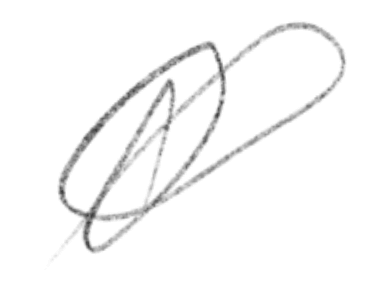There are a million different ways to solve a design challenge. In every case, the approach you take should depend heavily on the goal. And I’m not talking about the “Increase awareness 35%” kind of goal. I’m talking about the mental goal. What do you want people to feel? Do you want their pulse to quicken? Their mind to race? Do you want to intrigue them? Or comfort them?
Design can be used to accomplish all of these goals – you just need to know what you’re aiming at. Then you will know whether you should be designing for clarity or designing for curiosity.
Do you want to increase clarity or inspire curiosity?
Designing for Clarity
Designing for clarity works best with a defined audience and a tactical goal. For example, hungry travelers on I-75 will likely respond to a billboard featuring nothing more than a large hamburger and an exit number. It’s uncomplicated, stripped of all irrelevant information. There’s no URL, no other menu choice, just the basics: For food, exit here.
This is perhaps the simplest example of clarity in design, but there are even better examples that solve multiple design challenges at once. The packaging of Apple products has long served as a symbol of clarity AND beauty.
For those somehow still in the dark, Apple packaging typically features product photos scaled to size on a solid black or white background. There is little to no copy – just a product name, storage size, and the Apple logo. No features, no benefits, and no key selling lines. From this little bit of information, your can determine size, shape, color, and weight – everything you need to inform your opinion of the brand and make your in-store purchase decision.
By being simple and beautiful on the outside, you know that it is simple and beautiful on the inside.
In Apple’s case, clarity is addition through subtraction. To mirror this approach, you must define your goals, and then remove everything that gets in the way. This allows your brand to speak volumes, as it no longer needs to shout over itself.
Designing for Curiosity
When designing for curiosity, you’ll still need a defined audience and goal. But your goal will be vastly different. In this case, you present your audience with a puzzle to solve and they do a lot of the heavy lifting.
Recently, a series of yellow billboards went up around the country. No words, no website. Just a little white ghost outlined in black.
You may recognize this as the Snapchat logo, and indeed it is. But what was the message? For Snapchat’s well-defined group of users, the billboards provided a bit of excitement. A mystery they wanted to solve: “Why is it here? What does it mean? Is something new coming? Will something great happen if I share this on Snapchat?”
A well-conceived mystery is an invitation to explore.
If Snapchat had designed the same billboard with the addition of “Available in the App Store,” they would have abandoned their user base. Current users already know where to get the app and they would have assumed the ad was merely trying to attract new users. But the ambiguity of this ad invites viewer participation. Instead of telling them exactly what to do, Snapchat gave them a reason to dig a little deeper.
Few things on earth are as rewarding as solving a mystery. Everything from “Who killed Laura Palmer” to “What color is this dress?” can spark curiosity. When we seek to answer these questions, we learn through exploration and discovery. When we learn by doing something ourselves, we’re not soon to forget it.
Which is right for you?
Whether you design for clarity or curiosity will depend on your goals. Both approaches can provide a certain satiable need for your audience. Whether it’s the instant gratification of now or the slow reveal of a mystery, you may need to call on both at different times, for different audiences. The wisdom to know the difference, and your ability to follow through can make all the difference for your brand.
